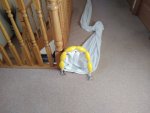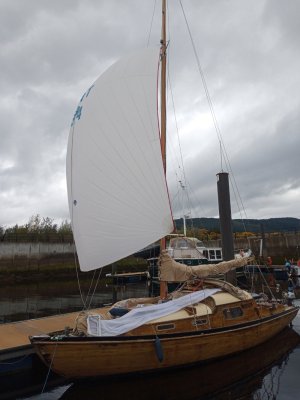RJJ
Well-known member
I've been toying with a snuffer for 45 foot AWB. I want to use our symmetric spinnaker short-handed - ideally, be able to douse it single-handed.
Then I've been puzzling on a deck-chute. I wondered if anyone else has tried one? A sailmaker tells me they work well but only with a high-speed winch of some kind; he figured without it I'd be at risk of losing control of the halyard faster than I could pull in the retrieval line, and I'd be better off with a snuffer.
I'm still puzzling. I'd be able to rig the retrieval line onto one coach-roof winch, with the halyard drop controlled on the opposite one. I figure I'd be able to pull in (and control) armfuls of the retrieval line while easing the halyard a few feet at at time. Once the sail's collapsed, there's not much load on the halyard and it would suffice to have a couple of turns on the winch - maybe with the tail thrown overboard.
Advantages of the deck-chute - dousing the sail without leaving the cockpit, and fully hoisting the sail without an ugly neckerchief.
Then I've been puzzling on a deck-chute. I wondered if anyone else has tried one? A sailmaker tells me they work well but only with a high-speed winch of some kind; he figured without it I'd be at risk of losing control of the halyard faster than I could pull in the retrieval line, and I'd be better off with a snuffer.
I'm still puzzling. I'd be able to rig the retrieval line onto one coach-roof winch, with the halyard drop controlled on the opposite one. I figure I'd be able to pull in (and control) armfuls of the retrieval line while easing the halyard a few feet at at time. Once the sail's collapsed, there's not much load on the halyard and it would suffice to have a couple of turns on the winch - maybe with the tail thrown overboard.
Advantages of the deck-chute - dousing the sail without leaving the cockpit, and fully hoisting the sail without an ugly neckerchief.


